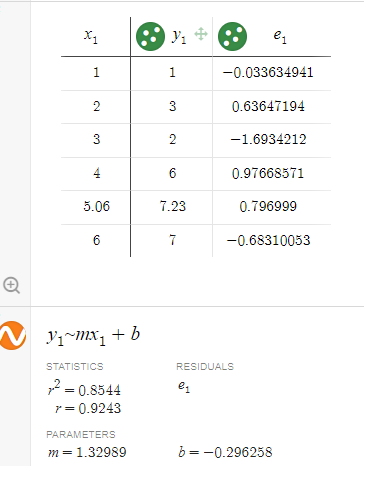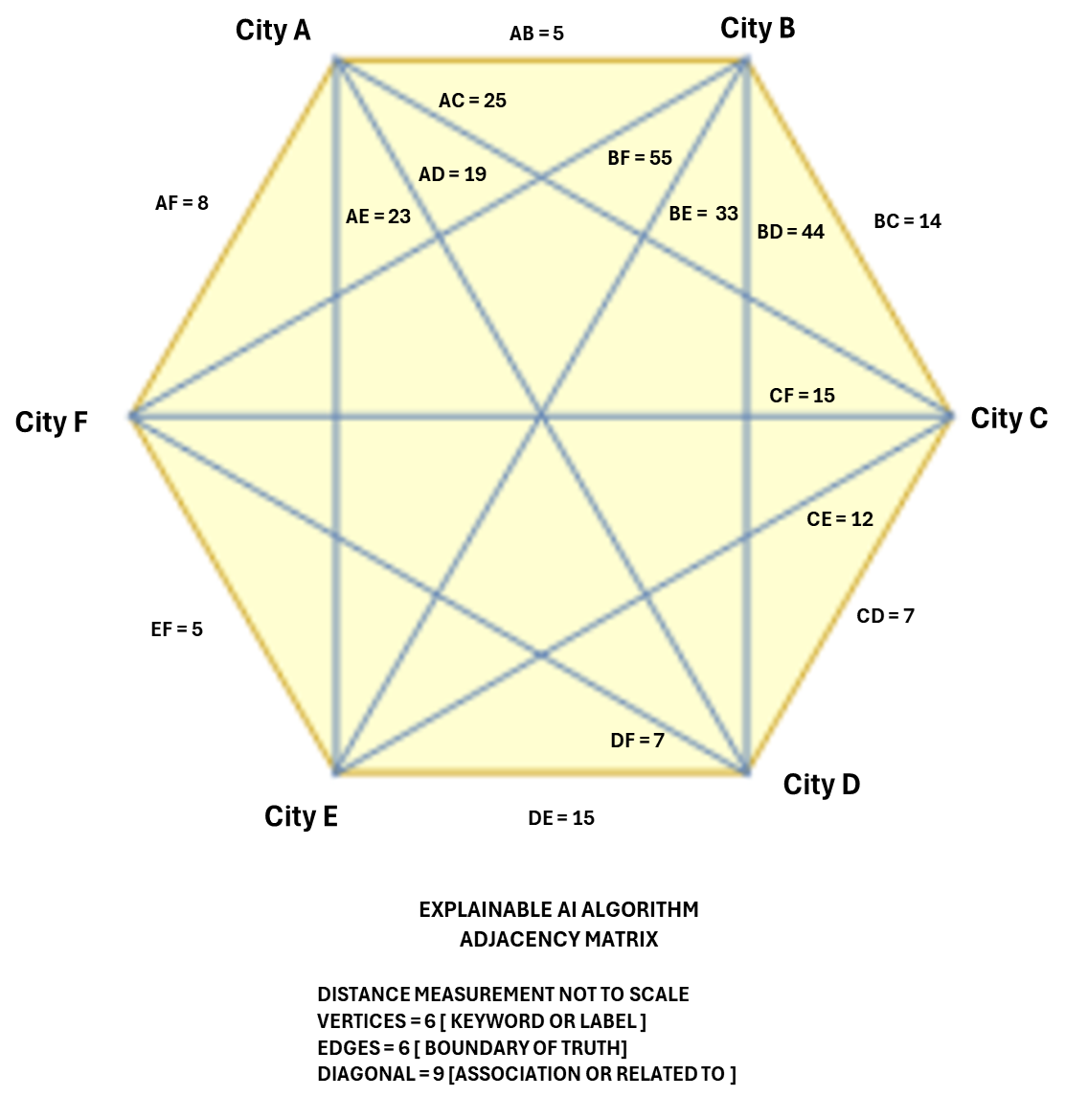Never Forget Again

















🎯 NEVER FORGET.
Every solved problem becomes trusted automation—saving you time, reducing stress, and helping you make smarter decision faster.
Subscribe now—because your memory deserves a backup.
$120 per school per year
click to read more
Use AI voice-to-text: type or speak your query then tap SEARCH 2
Machine Learning Explanation
by Apolinario "Sam" Ortega, founder of IN-V-BAT-AI

Linear regression is a good visualization to explain machine learning. The machine or computer actually did not learn by itself to discover the generalized
line equation in slope form. In this example you gave the computer six (6) training data points to approximate the best line equation.
Using only two dimensions machine or computer can predict or inference the correct answer. Dimension 1 is represented by letter variable x in x-axis. Variable x is also called predictor input
or independent variable.
Dimension 2 is represented by letter variable y in y-axis. Variable y is also called the predicted output or dependent variable.
credit to : Desmos Graphing by Sam Ortega 5/28/2022
Then you select the best fit linear equation algorithm that best describe the relationship between the two given dimensions x and y variables. The discovered relationship is summarize by the line
slope equation y = 1.329x - 0.296. This equation is now called the machine learning model at that time using six (6) training data point. This linear equation is used to predict the output
value of y given the input value of x.
But other task like image identification, classification, object detection, information retrieval, search, fraud detection, anomaly detection, voice to text, and text to
voice translation have more than two dimensions or parameters which linear regression algorithm is not good at. So, machine learning engineer, AI research scientist, data scientist
created new algorithm to automate the iteration of undefined and hidden pattern.
Because it is still hard to discover the generalized pattern or equation, hence, the algorithm is referred to as black box.
Since the dimensions could be in thousands, millions, billions or even trillion of parameters we need the machine
to help us discover the pattern.
Emerging Algorithm to Watch: Adjacency Matrix Algorithm
The Adjacency Matrix Algorithm is revolutionizing various fields:
Graph Representation: Efficiently represents graphs for better visualization and analysis.
Connectivity Analysis: Enhances understanding of network connections.
Graph Algorithms: Powers algorithms like Dijkstra’s, Floyd-Warshall, and Kruskal’s for optimal solutions.
Image Processing: Improves image recognition by analyzing pixel relationships.
Social Network Analysis: Unveils insights into social connections and interactions.
Network Routing: Optimizes data routing in networks.
Urban Traffic Planning: Aids in designing smarter traffic systems.
Example of Graph Adjacency Matrix Algorithm

Graph Neural Network (GNN)
Graph Convolutional Newtork (GCN)
Graph Attention Network (GAT)
DeepWalk
Node2Vec
PageRank
Label Propagation Algorithm (LPA)
Again the basic principle is the same, the machine or computer did not learn by itself, humans give the training inputs to discover
the pattern or relationship. The hidden pattern discovered by machine appears to be very hard to trace for auditing so human can see where the errors happen.
The machine learning is now behaving like a human brain where you can not see the many series of mathematical equations it selected to deliver the correct output.
But expertise of human brain
is achieved by continuous training until it can repeat the correct output. Then when the output is proven to be wrong the human brain will document the known input that resulted to
a wrong output and document the event as known exception where the answer or output is not valid or wrong. Then human brain will do another training to discover the root cause why
the answer or output is wrong.
Similarly machine learning hidden or black box model will need another training when its predicted output or answer is no longer valid due to new added informations that were
not available at the time of training.
Scatterplot is a good visualization of the coefficient of relationship between the input data (x) and the output or predicted value(y).
Scatterplot is the first evidence you need to show that there is a linear relationship that exist between the input data (x) and the output or predicted value(y). If you can't show it.
Then your assumption of linear relationship is questionable and can't be used for predicting the output.
In Excel the r-value or the relationship coefficient between the input x and output tells you the confidence level that a linear relationship exist. If r value = 0.9998 it means there is
a very high confidence that a direct linear relationship exist. Therefore you can use the x input data to predict the value of output y.
If r value = 0.3451 it means there is a low confidence that a direct linear relationship exist and therefore the x value input
can't be used for predicting the output value of y.
credit to : Desmos Graphing by Sam Ortega 5/28/2022
Different Type of MachineLearning Algorithm
Understanding Latent Space in
Machine Learning
Many Types of Regression
How to tell if a person has supporting evidence as machine learning subject matter expert
.
IN-V-BAT-AI helps you recall information on demand—even when daily worries block your memory. It organizes your knowledge to make retrieval and application easier.
Source: How People Learn II: Learners, Contexts, and Cultures
.
How can IN-V-BAT-AI be used in classrooms ?
IN-V-BAT-AI is a valuable classroom tool that enhances both teaching and learning experiences. Here are some ways it can be utilized:
☑️ Personalized Learning : By storing and retrieving knowledge in the cloud, students can access tailored resources and revisit
concepts they struggle with, ensuring a more individualized learning journey.
☑️ Memory Support : The tool helps students recall information even when stress or distractions hinder their memory, making it
easier to retain and apply knowledge during homework assignments or projects.
☑️ Bridging Learning Gaps : It addresses learning loss by providing consistent access to educational materials, ensuring that
students who miss lessons can catch up effectively.
☑️ Teacher Assistance : Educators can use the tool to provide targeted interventions to support learning.
☑️ Stress Reduction : By alleviating the pressure of memorization, students can focus on understanding and applying concepts,
fostering a deeper engagement with the material.
🧠 IN-V-BAT-AI vs. Traditional EdTech: Why "Never Forget" Changes Everything
📚 While most EdTech platforms focus on delivering content or automating classrooms, IN-V-BAT-AI solves a deeper problem: forgetting.
✨Unlike adaptive learning systems that personalize what you learn, IN-V-BAT-AI personalizes what you remember. With over 504 pieces of instantly retrievable knowledge, it's your cloud-based memory assistant—built for exam prep, lifelong learning, and stress-free recall.
- ✅ One-click access to formulas, calculators, and concepts
- 📧 No coding, no hosting—just email what you want to remember
- 📱 Live within 24 hours, optimized for mobile and voice search
- 💸 $30/year for 504 personalized memory sites (just 6¢ each)
"🧠 Forget less. Learn more. Remember on demand."
That's the IN-V-BAT-AI promise.
Personal Augmented Intelligence (AI) Explanation
🧠 Augmented Intelligence vs Artificial Intelligence
Understanding the difference between collaboration and automation

🔍 Messaging Contrast
Augmented Intelligence is like a co-pilot: it accelerates problem-solving through trusted automation and decision-making, helping you recall, analyze, and decide — but it never flies solo.
Artificial Intelligence is more like an autopilot: designed to take over the controls entirely, often without asking.
💡 Why It Matters for IN-V-BAT-AI
IN-V-BAT-AI is a textbook example of Augmented Intelligence. It empowers learners with one-click recall, traceable results, and emotionally resonant memory tools. Our “Never Forget” promise isn't about replacing human memory — it's about enhancing it.

Note: This is not real data — it is synthetic data generated using Co-Pilot to compare and contrast IN-V-BAT-AI with leading EdTech platforms.


.
.
.
🎉 60,000 Visitors 10/24/25
IN-V-BAT-AI just crossed 60,000 organic visits—no ads, just curiosity and word-of-mouth.
Every visit is a step toward forgetting less, recalling faster, and remembering on demand.
Never Forget. Learn on demand.
🔗 SubscribeTry AI website hosting
$30 per year
| Year | Top 10 countries | Pages visited |
| 2023 | 1. USA 2. Great Britain 3. Germany 4. Canada 5. Iran 6. Netherlands 7. India 8. China 9. Australia 10. Philippines | 127,256 Pages / 27,541 Visitors |
| 2024 | 1. USA 2. China 3. Canada 4. Poland 5. India 6. Philippines 7. Great Britain 8. Australia 9. Indonesia 10. Russia | 164,130 Pages / 40,724 Visitors |
| Daily Site Visitor Ranking 10/26/2025 | 1. USA 2. Canada 3. Brazil 4. Vietnam 5. China 6. India 7. Argentina 8. Japan 9. Morocco 10. Indonesia | Year to Date 178,030 Pages / 60,375 Visitors |
Data source: Advanced Web Statistics 7.8
Approximately between 2.3 and 2.5 million schools globally, according to the latest available data from government and education ministry reports.
🔗 The challenges schools face: 2025/2026 🔗 USA ~ Public 98,500 ~ Private 30,000 ~ Total 128,500 🔗 Canada ~ Public 15,500 ~ Private 2,000 ~ Total 17,500 🔗 Brazil ~ Public 138,000 ~ Private 40,000 ~ Total 178,000 🔗 Vietnam ~ Public 42,000 ~ Private 8,000 ~ Total 50,000 🔗 China ~ Public 217,200 ~ Private 152,800 ~ Total 470,000 🔗 India ~ Public 1,022,386 ~ Private 335,844 ~ Total 1,358,230 🔗 Japan ~ Public 30,240 ~ Private included ~ Total 30,240 🔗 Morocco ~ Public 20,600 ~ Private 6,300 ~ Total 26,900 🔗 Indonesia ~ Public 390,718 ~ Private included ~ Total 390,718 🔗 Philippines ~ Public 47,831 ~ Private 13,000 ~ Total 60,831 Great Britain ~ Public 29,202 ~ Private included ~ Total 29,202 🔗 Australia ~ Public 9,653 ~ Private included ~ Total 9,653 🔗 Russia ~ Public 39,070 ~ Private included ~ Total 39,070 🔗 Germany ~ Public 31,039 ~ Private included ~ Total 31,039 🔗 Poland ~ Public 36,291 ~ Private included ~ Total 36,291 🔗 Iran ~ Public 80,000 ~ Private included ~ Total 80,000 🔗 France ~ Public 58,100 ~ Private included ~ Total 58,100 🔗 Mexico ~ Public 132,505 ~ Private included ~ Total 132,505







